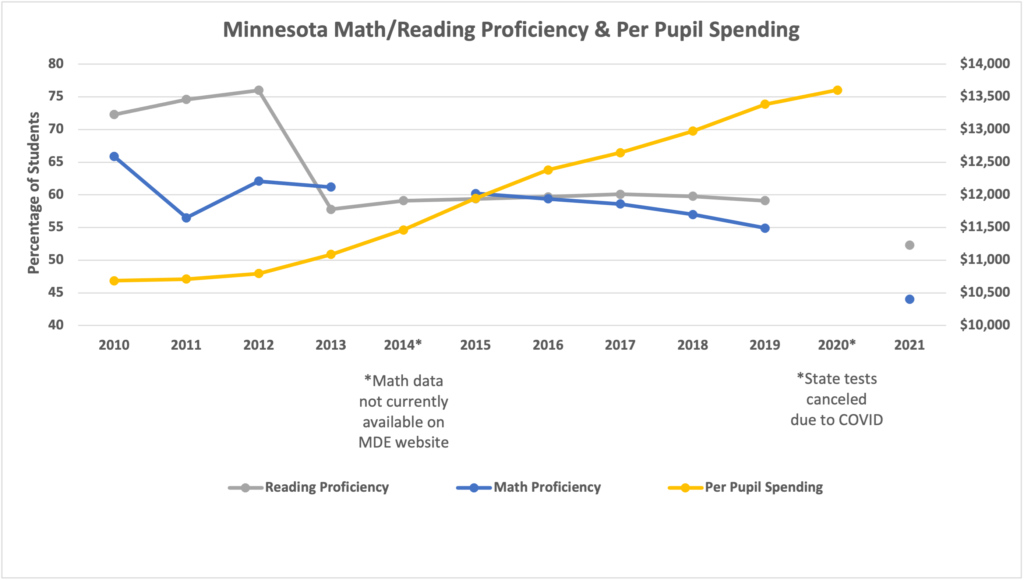Legislation that finally brings real school choice to Minnesota advances
Members of the Senate Education Finance and Policy Committee recently approved an Education Savings Account (ESA) bill that would provide more Minnesota families access to K-12 education services and learning environments that best meet their children’s needs.
S.F. 1525, which establishes ESAs, would finally bring real school choice to Minnesota and help under-performing students have the opportunity to reach higher levels of educational attainment.
An ESA program allows parents to use the state education dollars allocated for their child toward a variety of different state-approved education-related expenses. These include tutoring or supplemental curriculum, mental health treatment, special education services and therapy, or tuition at a non-public school. Parents access their child’s share of state education assistance through a restricted, government-authorized savings account often in the form of a debit card. ESAs provide education dollars directly to families (from whom education funding comes in the first place) versus a specific school or institution.
School choice programs do not spur underfunding of public schools
The bill’s opponents were quick to rattle off their talking points against the initiative, including the oft-stated claim that school choice programs lead to underfunded public schools.
But an overwhelming number of empirical studies confirm that educational choice programs (including ESAs) do not have a negative fiscal impact on public schools and taxpayers. They do not “drain” public schools or “defund” them. For ESAs, the state dollars follow the student to the school doing the work of educating them. Federal and local funds stay behind in a student’s home district even though the student is no longer there.
School choice programs do have positive achievement effects
“Vouchers do not improve student achievement,” wrote the Minnesota School Boards Association in a joint letter to the Senate education committee on its opposition to S.F. 1525.
First, referring to the ESA language in the bill as “vouchers” is inaccurate, as I explain here.
Second, the studies MSBA and its partners include to support their claim are only part of the story. Three studies found that the students who participate in school choice programs in Louisiana, Indiana and Ohio perform worse academically than their peers. But the co-author of the Louisiana study points out that the state’s school choice program is distinctive — it’s the most highly regulated school voucher program and only 1/3 of private schools participate — which makes it harder to compare to other school choice programs.
But MSBA’s joint letter didn’t mention the seven studies that found that all students in school choice programs benefited academically. And another four studies that found participation had positive academic effects on some of the students. This means that 11 studies showed that participation in a school choice program benefited students academically.
School choice programs do have positive impact on public schools
Out of 28 studies on the impact of school choice on public schools, 26 found a positive impact, with one study finding no impact and one study finding a negative impact. The most recent study on Florida’s tax credit program discovered that the competitive pressure of the program led to substantial gains for the students remaining at the public schools, including better student outcomes.
What do we have to lose?
According to the Duluth News Tribune, Democrats on the Senate education committee said “students in public schools could be set up for better outcomes if lawmakers sent more money to those schools.” But as I detail in my education report, Minnesota’s public schools have little to show for decades of increased spending. States like Texas and Mississippi, which serve similar student demographics as Minnesota, spend far less per pupil for better academic results among their students of color compared to Minnesota’s students of color.

Until we pursue solutions outside of the education “reforms” that have been tried ad nauseam, and until we stop assuming that monetary inputs will miraculously lead to our students catching up academically, Minnesota’s education system will not get the lasting change it needs and all our students will not get the education they deserve.
Parents, particularly in communities of color, support ESAs and expanding school choice, and it’s time for Minnesota to join the numerous other states that are prioritizing students over a top-down education system with clear shortcomings.